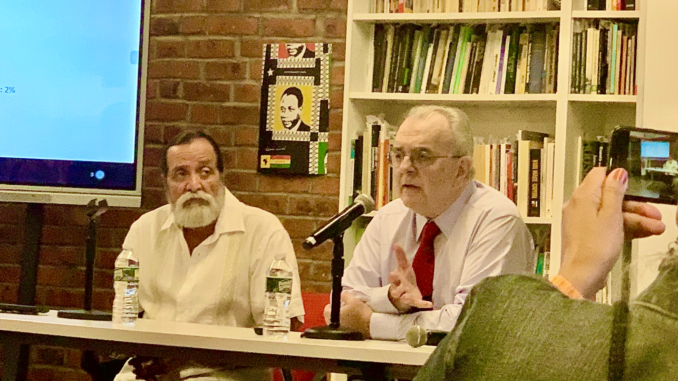
BY KELLY MCGRATH
Puerto Rico is hit most years by devastating Atlantic hurricanes, and researchers warn things will only get worse as water temperatures continue to rise. When Hurricane Ernesto swept the northeast Caribbean last month, over one million people on the U.S.-controlled island territory were left without power, cutting off their access to medical equipment, lights, and refrigeration.
It was a humanitarian disaster by mainland American standards. But it was business as usual for the unincorporated island territory of the United States. The Puerto Rican power grid is famously unstable due to what many charge is underinvestment and poor maintenance of the island’s municipal resources.
When Hurricane Maria devastated the island in Sept. 2017, it took nearly eleven months for the island’s power grid to be fully restored and by the end it had claimed nearly 4,000 lives.
AMANESER, a Puerto Rican grassroots organization that focuses on the installation and maintenance of solar panels on homes in Puerto Rico, particularly those homes most susceptible to prolonged blackouts, came to New York to both educate people and raise funds to address the island’s ongoing energy crisis, gathering at The People’s Forum in midtown Manhattan on Sept. 24.
Juan Rosario, founder of AMANESER and Tom Sanzillo, Director of Financial Analysis at the Institute for Energy Economics, discussed how the installation of solar panels can create swift change to prevent senseless deaths as the tropical storms continue to increase in intensity.
AMANESER, which means “daybreak” in Spanish, examined the longer-term mortality estimates from Hurricane Maria, and found that the majority of deaths occurred not when the storm hit in September, but in December, months later, as Puerto Rico’s poorest and most vulnerable residents could no longer survive without power.
Rosario, who has worked as community leader and activist for over fifty years, asked the people what they needed most after the storms and the answer was almost unanimous: “electricity.”
In areas such as Veguita Zama, Jayuya,and other isolated areas of the island where Hurricane Maria dealt considerable damage, almost 25% of homes now have access to solar panel systems thanks to the work of AMANESER and its national collaborators. They began with installing panels equipped with small one-kilowatt converters and batteries and held workshops to teach the local communities how to build and maintain their own systems in 2018. In 2019 they were able to begin installing larger 2.5-kilowatt systems and also provide communities with rainwater harvesting and filtration systems as well as community refrigeration to keep local residents’ medicine stored safely.
Sanzillio has been working with environmental, labor and business organizations in Puerto Rico since 2014, including as an expert witness in the ongoing Puerto Rican electrical systems bankruptcy case, and says that this tragedy is entirely man made.
“When I took a look at the finances of Puerto Rico I quickly understood that there was a combination of corruption and, what’s even worse, business as usual,” Sanzillo said.
The money is there, Sanzillo said, but it is not being properly invested into municipal resources. Those who have invested in oil and coal in Puerto Rico deliberately undermine attempts to shift to renewable and more reliable forms of energy, he said, such as solar or hydro, because they aren’t willing to lose out on their investment.
“This is a full-scale institutional failure,” Sanzilllo said.
Rosario and Sanzillo insist that the installation of solar panels is a fast, efficient, and, most importantly, a reliable way to keep lights, refrigeration, and medical equipment powered throughout the storms. It can be implemented immediately to save lives now, they said, even before the next hurricane hits.
Rosario emphasized that solar panels are simple enough to deploy quickly, can be implemented by the common people with their own resources, and that the solar solution is democratic, replicable, scalable and scientifically supported. He said he has found that teaching people in the community to not only install but maintain solar panels is the best current solution.
Sanzillo says that not only is solar critical, but it’s the law. The passing of Act 17 by the Puerto Rican legislature in 2019 aimed to bring the island to 40% reliance on renewable energy by 2025. But as of 2024, the island is roughly 9% reliant on renewable energy and it is highly unlikely the U.S Department of Energy will be able to bring the island to this goal by 2025.
